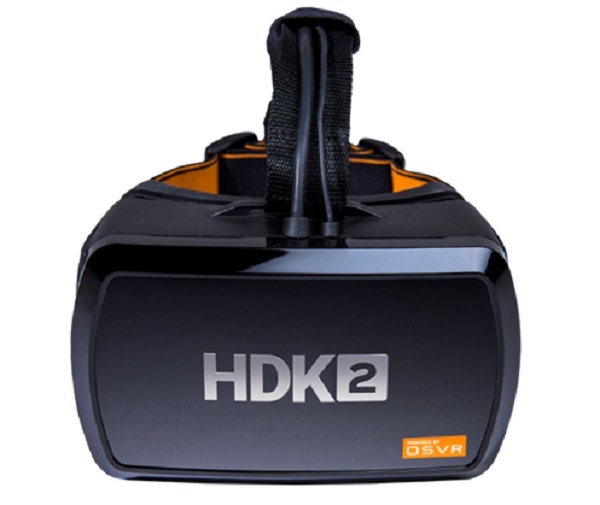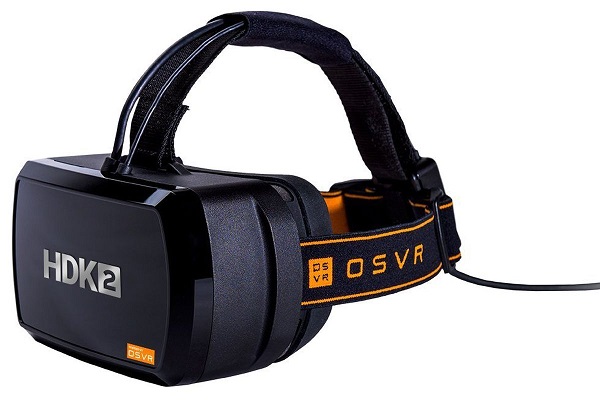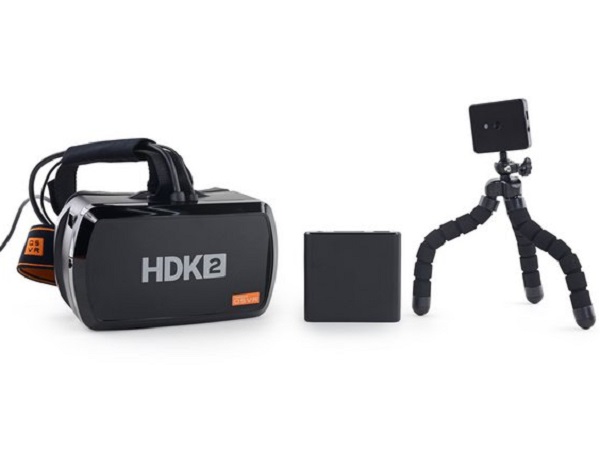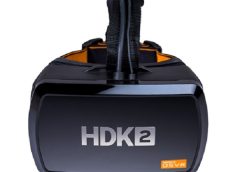
Presentation: The unboxing experience of the Razer OSVR HDK 2 really isn’t up to much because this is a headset designed for developers on a tight budget. At the time it was cheap as chips, but that also means the packaging is pretty basic with a plain brown box on the outside with very little in the way of branding. But having said that opening up the main box you soon see the headset encased in foam and everything else in cardboard departments. It’s neatly packaged inside and is way better than many, much more expensive headsets.
Razer OSVR HDK 2 Box Contents
- Head-Mounted Display (HMD) module with removable IR sensor box for 360°
- positional tracking
- Belt box module
- HDMI & USB Combo Cable
- IR Positional Tracking Camera
- Camera Stand
- USB Camera Cable
- Split cable for power and IR camera synchronization signal
- Air puffer with removable brush
- Power supply kit
- Important product information guide

Description: OSVR stands for Open Source Virtual Reality. It is an ecosystem designed from the ground up to set an open standard for Virtual Reality input devices, games and output with the sole goal of providing the best possible game experience in the Virtual Reality space. Supported by Industry Leaders and focused on gaming, the OSVR framework rallies gamers worldwide together to push the boundaries of VR-Gaming.
Razer OSVR HDK 2 Specs…
Headset: OSVR HDK 2
Manufacturer: Razer
Launch Price: $399 (£293) (headset only)
Release Date: July 2016
Headset Type: VR Headset (PC Powered)
Display: Single LCD at 1080 x 1200 per eye
Field of View(FOV): 110° horizontal / 90° vertical
Refresh Rate: 90 Hz
Interpupillary Distance Adjustment: Yes/No
Screen Focus Adjustment: Yes/No
Weight: 650 g (22.92 oz)
Tracking: 6 DoF Inside-out (marker based)

Review: Let’s get one thing clear, the Razer OSVR HDK 2 isn’t a headset for your normal VR consumer. Loading software into it can be hit and miss and the whole setting up experience isn’t something most people will find easy. Having said that the headset is a little tightfitting, so if you do wear glasses you might want to avoid this headset, but once you have got it on and running, it really isn’t bad at all and if you have the right equipment it can deliver a good VR experience. But with no motion controllers and not much in the way of tracking, you will need additional things to get this up and running. But as I said, it is not for the average VR consumer, but some developers will love it and will probably support it all the way to their deathbeds.

